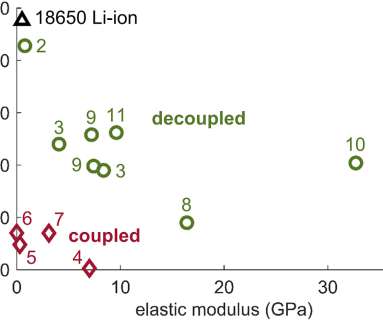MIT team synthesizes all carbon nanofiber electrodes for high-energy rechargeable Li-air batteries
Green Car Congress
JULY 25, 2011
The carbon nanofiber electrodes are substantially more porous than other carbon electrodes, and can therefore more efficiently store the solid oxidized lithium (Li 2 O 2 ) that fills the pores as the battery discharges. Thompson and Yang Shao-Horn (2011) All-carbon-nanofiber electrodes for high-energy rechargeable Li–O 2 batteries.













Let's personalize your content